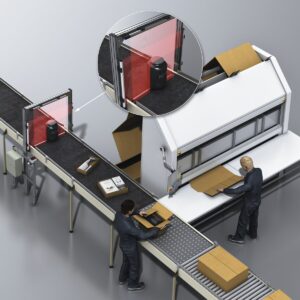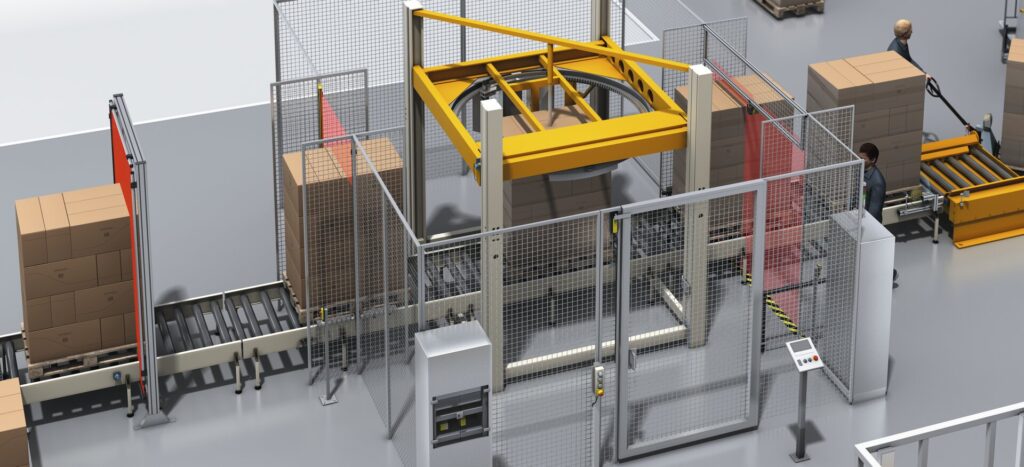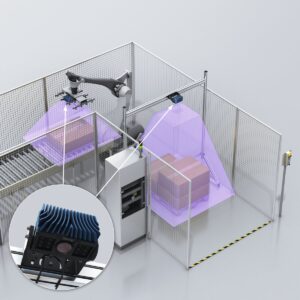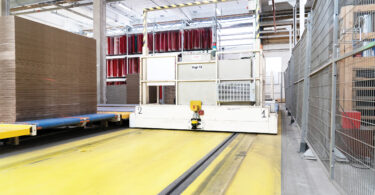Intelligent Sensors for Packaging and Pallet Handling in Retail Applications
By utilizing SICK intelligent sensors, the retail industry can keep up with consumer demand and can also maintain quality standards to increase efficiency. SICK’s tailor-made products and technologies for the retail industry has allowed it to become the leading provider of intelligent sensors, and it has allowed SICK’s clients to easily integrate sensors into any system environment. See how we can help with packaging and pallet handling.
In this five part blog post series, we’re highlighting five applications for intelligent sensor solutions that contribute to a fast, efficient, and economical supply chain in a series of blog post. In the final blog post, we discuss how implementing intelligent sensors in packaging and pallet handling processes can automate palletizing and depalletizing tasks for greater operational efficiency or prove reliable dimensioning for efficient production of packaging.

Automated Packaging Processes
Once all the materials have been handled, it’s time to get the packages ready to send out. To do this, the automated attachment of unique labels to moving packages, or print and apply (PandA) applications, allows for more efficient e-commerce fulfillment processes. Various sensor solutions can be used for this, including triggers, encoders, and bar code identification and dimensioning systems.
In addition, retailers can reliably measure products needing secondary packaging, using the light-grid based VML track and trace system. The system always measures goods correctly, regardless of the surface quality. It then sends the relevant data to the packaging machine to determine needed packaging dimensions.
Safe Palletizing Tasks
Once the pallets are loaded, stretch wrapping occurs. It’s important to prioritize safe stretch wrapping processes in a facility. But, before stretch wrapping occurs, its dimensions must be measured. The load is checked for overruns in order to ensure a smooth wrapping process. The framework arrangement of the programmable MLG-2 Pro automation light grid reduces shadows. A simple alternative is the TiM5xx 2D LiDAR sensor. The volume can also be determined using the VML track and trace system.

Even in a confined space, personnel still need safe access to the hazardous area of the machine in order to perform maintenance. A vertically mounted S300 safety laser scanner provides access protection. Muting sensors distinguish between a person or material approaching the lock. Therefore, pallets pass the protective field unimpeded, while if a person enters that area, the machine stops safely. Flexible protective field switching can be realized in the safety laser scanner or together with a Flexi Soft safety controller.
Loaded pallets are transported via the infeed and outfeed of a stretch film wrapper. Workers must be protected against dangerous movements in these areas. The deTem4 A/P LT Muting A/P multiple light beam safety device is ideal for this task. Combined with pre-adjusted GL6 photoelectric retro-reflective sensors as muting sensors, the deTem4 LT Muting A/P creates an efficient solution for muting in automated material transport.
 Robot Guidance Systems for Palletizing and Depalletizing
Robot Guidance Systems for Palletizing and Depalletizing
The Visionary-S 3D vision sensor determines the position and dimensions of packages on the conveyor belt or the pallet and transmits their exact position and dimensions to the robot control. This means the robot can take the correct gripping position and palletize or depalletize objects of different sizes. The 3D vision sensor checks the packing format during palletizing by comparing it with the data stored in the controller.
Want to learn more about tote picking solutions? And don’t miss the next article in this blog series where we discuss packaging and pallet handling solutions.





